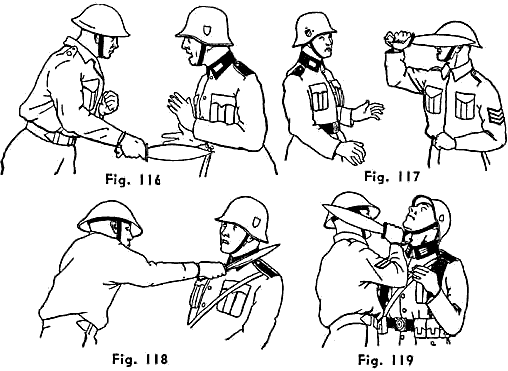I will echo JC's comments and refer to what the Army's UNCSG-JSA (DMZ and MDL Korea) has done with their grunts and MPs since 1970, as well as the majority of Ranger, SF and MTT members operating in hostile environments (with or without bayonets, knives or otherwise jammed firearms). However, the provision of such a discipline in the Army is relative to otherwise potential or foreseen operational events that dictate said training.
I think just about every Marine must graduate basic with at least one broken nose



















Bookmarks